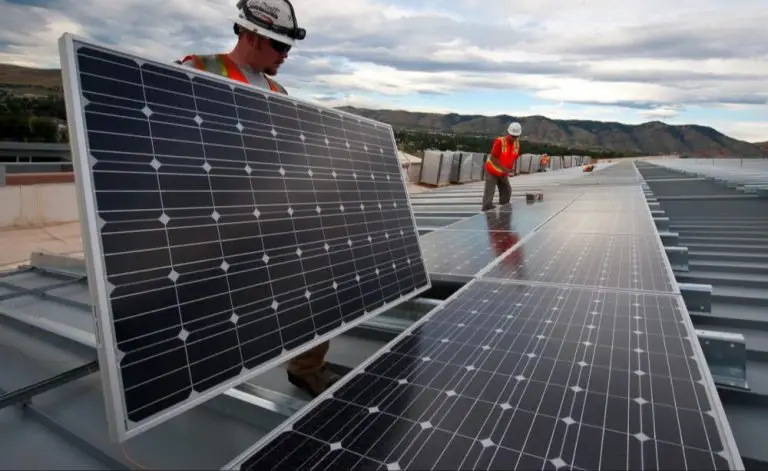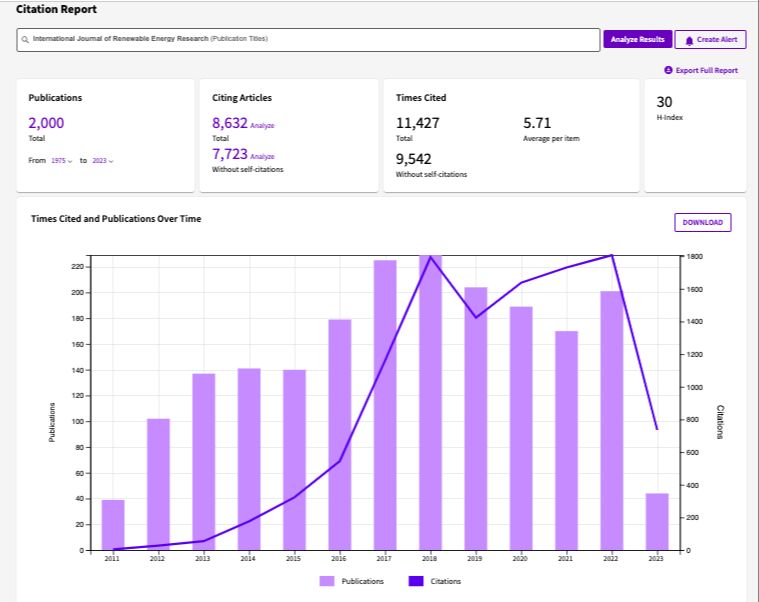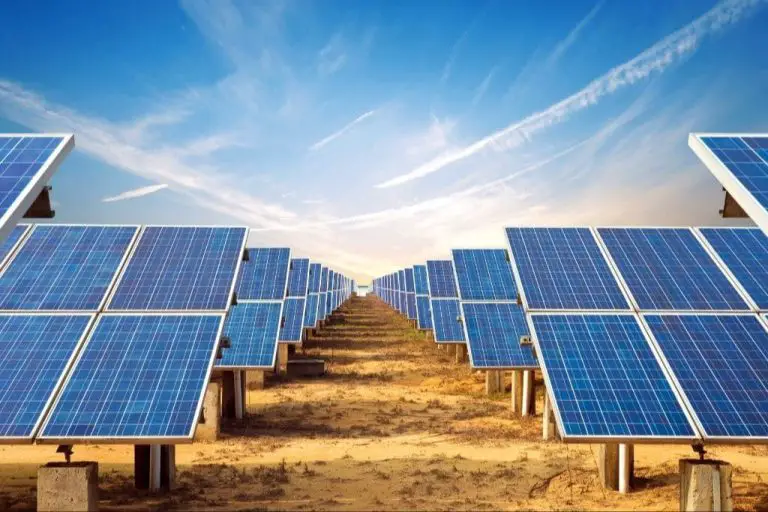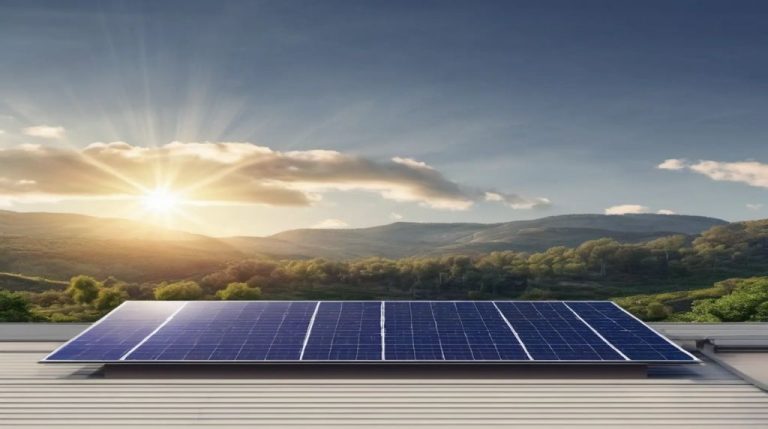Pros And Cons Of Different Solar Panel Types (Monocrystalline, Polycrystalline, Thin Film)
With the rise of renewable energy and the ever-growing threat of climate change, more homeowners and businesses are turning to solar panels to power their electricity needs. However, with various panel types on the market, it can be difficult to determine which type is best for different situations. Monocrystalline, polycrystalline, and thin film solar panels each have their advantages and limitations. In this blog post, we will dive deep into the technical details of these three main solar panel types, comparing their solar efficiency, appearance, manufacturing process, durability and more. By understanding the pros and cons of monocrystalline, polycrystalline and thin film panels, you will be empowered to select the best option for your home or business based on factors that matter most to you, like cost, performance and aesthetics. Let’s get started!
Monocrystalline Solar Panels Last Longer And Work Well In All Climates But Are The Most Expensive
When it comes to durability and performance, monocrystalline solar panels are widely considered to be the top-tier option. This type of panel is crafted using a single, high-grade silicon crystal, which allows for greater efficiency and unmatched longevity. Indeed, monocrystalline panels have an estimated lifespan of over 25 years, making them the most durable and long-lasting solar panels on the market.
Furthermore, due to their high efficiency, monocrystalline solar panels are an ideal choice for homeowners or businesses seeking maximum energy output, especially in areas with limited roof space. Their energy conversion rate is as high as 22%, which means they can convert up to 22% of the sunlight they absorb into usable electricity. This is significantly higher than both polycrystalline and thin-film solar panels, which have a maximum efficiency of 18% and 10% respectively.
Another benefit of monocrystalline solar panels is their ability to perform well in any climate, including low light conditions. Their uniform structure, with no grain boundaries, allows for greater resistance to extreme temperatures, moisture, and wind. They are also known for their superior thermal conductivity, which enables them to minimize voltage drop and increase overall performance in high-temperature environments.
Of course, these exceptional qualities come at a cost, literally. Monocrystalline solar panels are the most expensive option on the market. They require a more complex manufacturing process due to their single crystal structure, which inherently adds to their cost. However, for those who can afford the upfront investment, the long-term savings on energy bills and the environmental benefits are worth it.
Polycrystalline Solar Panels Are Cheaper Than Monocrystalline But Slightly Less Efficient And Durable
While monocrystalline solar panels offer the highest efficiency and durability among solar panel types, they are also the most costly option. This has led many consumers to consider polycrystalline panels as a more affordable alternative. Polycrystalline solar panels are made using multiple silicon crystals, which are melted down and formed into a single panel. This manufacturing process is less complex and time-consuming than that used for monocrystalline panels, resulting in lower production costs.
Although polycrystalline panels are slightly less efficient than monocrystalline panels, they still offer impressive energy conversion rates of up to 18%. This makes them a viable option for those seeking to maximize their energy output while not breaking the bank. Additionally, the latest technology advancements are narrowing the efficiency gap between the two panel types, making polycrystalline panels an increasingly attractive option.
Another advantage of polycrystalline panels is their ability to perform well in high-temperature environments. While monocrystalline panels are known for their superior thermal conductivity, polycrystalline panels are better able to withstand the heat due to their grain boundaries, which enable thermal expansion without cracking. This makes them a popular choice in hot and humid climates.
However, polycrystalline panels are slightly less durable than their monocrystalline counterparts. Their multiple-crystal structure can make them more susceptible to micro-cracks, which can reduce their lifespan. That being said, the difference in their lifespan is negligible, with polycrystalline panels still having an estimated lifespan of over 20 years.
Another potential drawback of polycrystalline panels is their appearance. The manufacturing process for polycrystalline panels results in a characteristic speckled blue color that some find less visually appealing than the uniform black color of monocrystalline panels.
Thin Film Panels Are The Most Affordable But Least Efficient And Can Be Damaged More Easily
When it comes to affordability, thin film solar panels lead the pack. These panels are made using a much simpler process than crystalline panels, involving coating a thin layer of semiconductor material on a substrate (usually glass). This means that thin film panels cost significantly less to produce compared to both monocrystalline and polycrystalline panels. Additionally, thin film panels are much lighter and more flexible, allowing for easier transportation and installation.
However, the tradeoff for this affordability is a lower efficiency rate. Thin film panels typically convert sunlight into electricity at a rate of 10-12%, which is considerably lower than either crystalline panel type. This means that more panels are needed to generate the same amount of energy, increasing the overall installation cost.
Furthermore, thin film panels are also less durable than crystalline panels. The thin, flexible nature of the material means that they are more susceptible to physical damage, such as punctures or scratches. This can result in a shorter lifespan for the panels, with estimates ranging from 15-20 years. The reduced efficiency and durability of thin film panels may make them less appealing to those looking for a long-term and reliable solar energy solution.
Another potential drawback of thin film panels is their appearance. They are known for their characteristic bluish color, which some find less visually appealing than the more uniform look of crystalline panels. Additionally, the lower efficiency rate of thin film panels means that more panels are needed to generate the same amount of energy, which can take up more space and potentially detract from the aesthetic appeal of a building.
Overall, while thin film solar panels are the most affordable option, they come with tradeoffs in terms of efficiency, durability, and aesthetics. The decision of which type of solar panel to choose ultimately depends on the specific needs and priorities of the individual or business owner.
Compare Efficiency And Cost Effectiveness Of Each Type Under Different Climate Conditions
When it comes to selecting a solar panel type, it’s important to consider the unique climate conditions of the location where the panels will be installed. Different panel types perform differently based on factors like temperature, humidity, and shading.
In hotter climates with high temperatures and low humidity, monocrystalline solar panels typically have higher efficiency rates than polycrystalline panels. This is because monocrystalline panels are made from a single, pure silicon crystal, which helps them perform better in high heat. Polycrystalline panels are made from multiple smaller crystals, which tend to be less efficient at converting sunlight into electricity in hot temperatures. Additionally, monocrystalline panels have a lower temperature coefficient, meaning that their performance decline is less severe as temperatures rise. However, it’s worth noting that the difference in efficiency between monocrystalline and polycrystalline panels is relatively small and may not be significant enough to justify the higher cost of monocrystalline panels in all cases.
In more temperate climates with moderate temperatures and higher humidity levels, the efficiency difference between monocrystalline and polycrystalline panels may be less noticeable. In these conditions, both panel types can perform well and generate similar amounts of electricity. Cost effectiveness may also play a larger role in this scenario, as the affordability of polycrystalline panels may make them a more attractive option for those looking to install solar panels without breaking the bank.
When it comes to thin film solar panels, their lower efficiency rates make them less ideal for regions with lower levels of sunlight, such as areas with frequent cloud cover or higher latitudes. In these conditions, more panels would be needed to generate the same amount of electricity as monocrystalline or polycrystalline panels, resulting in higher installation costs. However, thin film panels may be a better fit for areas with consistently high levels of sunlight, as their lower cost and lighter weight make them a more affordable and convenient option for generating solar power.
Ultimately, the decision of which type of solar panel to choose depends on a variety of factors, including climate conditions, cost effectiveness, and personal preference. By carefully considering these factors and working with a reputable solar panel installer, homeowners and businesses can select the solar panel type that best meets their needs and provides reliable, sustainable energy for years to come.
Consider Your Roof Type And Pitch For Best Solar Panel Compatibility
Another crucial factor to consider when selecting a solar panel type is roof compatibility. Not all solar panels are compatible with every roof type and pitch. It’s important to choose a solar panel that can be safely mounted onto your roof without causing damage to the structural integrity of your home or business. This requires careful consideration of the panel size, weight, and mounting options.
For example, monocrystalline and polycrystalline solar panels are typically installed using racks that attach to the roof surface. These racks must be secured with roof penetrations that connect to the roof trusses or rafters, which provide the necessary support for the panels. Therefore, it’s important to choose a roofing material that can withstand these penetrations, like asphalt shingles or metal roofing. Alternatively, flat roofs or roofs with a low pitch can also be compatible with solar panels, but additional mounting systems may be required to account for the angle of the panels.
Thin film solar panels, on the other hand, are more flexible and can be attached directly to the roof surface using an adhesive. This makes them a great option for roofs with irregular shapes or pitch angles. However, not all adhesives are compatible with every roofing material, so it’s important to consult with a professional installer to ensure that your roof can support thin film panels.
In addition to roof compatibility, it’s also important to consider the amount of sunlight your roof receives throughout the day. If your roof is partially shaded by trees or nearby buildings, this can significantly reduce the amount of electricity your solar panels can generate. A reputable solar panel installer can conduct a shading analysis, which takes into account the position of the sun throughout the year and any potential obstructions that could impact solar panel performance.
Assess Current And Expected Future Electricity Needs Tosize Your System Appropriately
Assessing your current and expected future electricity needs is a critical step in determining the appropriate size of your solar panel system. A system that is too small will not produce enough electricity to meet your needs, while a system that is too large will be both cost-prohibitive and inefficient. Therefore, it’s important to conduct a thorough analysis of your electricity usage and future energy goals.
To begin, review your electricity bills from the past year to understand your average monthly usage. This information will give you a baseline for assessing how much electricity you need to generate each day. Keep in mind that your electricity usage may fluctuate seasonally due to factors such as air conditioning usage during the summer months.
Next, consider your future energy goals. Are you planning on expanding your home or business in the near future? Do you anticipate an increase in electricity usage due to the addition of new appliances or equipment? These factors should be taken into account when sizing your solar panel system.
It’s also important to consider how much electricity you want to offset with your solar panel system. Some homeowners and businesses choose to offset all of their electricity usage with solar power, while others only want to offset a portion of their energy usage. Determining your energy offset goals will help you size your system appropriately.
Once you have a clear understanding of your energy needs and goals, a professional solar panel installer can help you calculate the appropriate size of your system based on the geographic location of your property and the amount of sunlight your roof receives. Additionally, they can help you understand any grants or tax incentives that can help offset the cost of your solar panel system, making it even more cost-effective in the long run.
Overall, assessing your current and expected future electricity needs is a critical step in sizing your solar panel system. By gaining a comprehensive understanding of your usage, goals, and solar energy generation potential, you can make an informed decision that will ultimately save you money and reduce your carbon footprint.
Government Incentives Available For Solar Installations Differ By Location And Technology
In addition to assessing your energy needs and goals, it’s important to consider the government incentives available for solar installations in your location. These incentives can vary greatly depending on the technology you choose for your solar panel system and the geographic location of your property.
For example, in the United States, the federal government offers a 26% tax credit for residential and commercial solar panel installations that are completed by December 31, 2022. This credit applies to all three types of solar panels – monocrystalline, polycrystalline, and thin film – and can significantly reduce the upfront cost of your solar panel system.
In addition to federal incentives, many states and local governments offer their own incentives for solar installations. Some states offer cash rebates or performance-based incentives that pay you for the electricity your solar panel system generates. Others offer property tax exemptions or sales tax exemptions for solar panel installations.
The incentives available for each technology can also differ based on the specific technology used. For example, some states offer bonus incentives for solar panel systems that use microinverters, which convert the DC electricity generated by the solar panels into AC electricity for use in your home or business.
It’s important to research the incentives available in your location and for the technology you choose to ensure that you take advantage of all available opportunities for cost savings. Your solar panel installer can help you understand the incentives available in your area and can help you navigate the application process.
Overall, taking advantage of government incentives can make solar panel installations even more cost-effective and can help you achieve your energy goals while reducing your carbon footprint.
Understand Installation And Ongoing Maintenance Requirements For Each Panel Type
In addition to considering the government incentives available for solar panel installations, it’s also crucial to understand the installation and ongoing maintenance requirements for each panel type. The installation process for each type of panel varies, so it’s important to work with a qualified installer who can ensure your solar panels are installed correctly and efficiently.
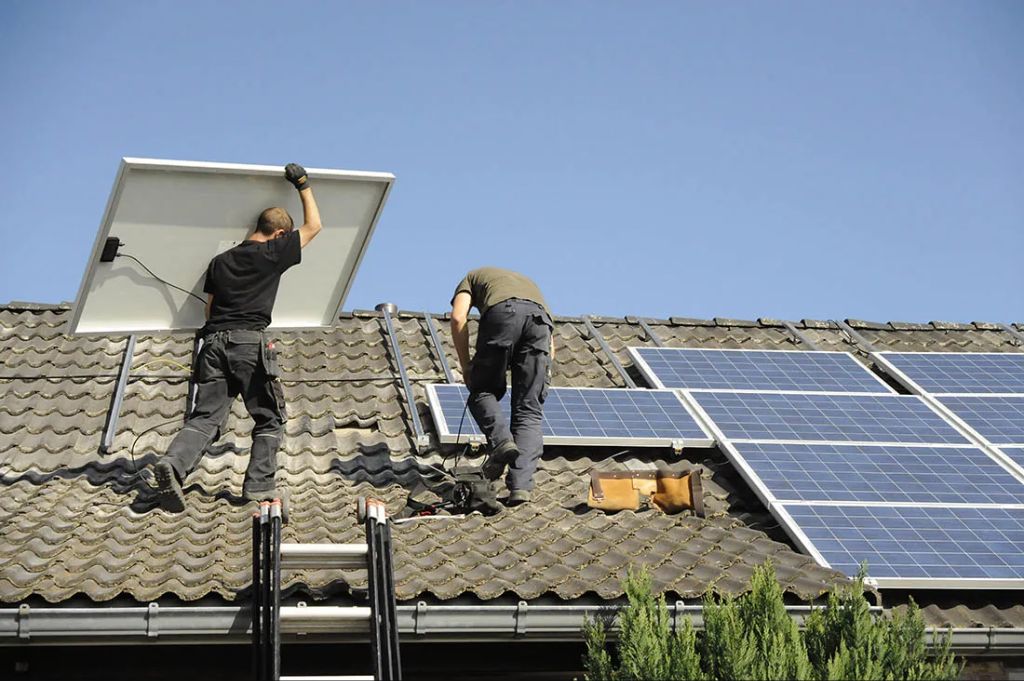
Monocrystalline solar panels, for example, can be installed on roofs or as ground-mounted systems. They require a sturdy mounting structure and positioning that maximizes their exposure to sunlight. The installation process involves drilling holes into your roof or the ground and securing the panels in place. Monocrystalline panels are relatively heavy, so it’s important to make sure your roof can handle their weight.
Polycrystalline solar panels are typically installed in a similar fashion to monocrystalline panels, with a mounting structure and secure placement on the roof or ground. One advantage of polycrystalline panels is that they can be cut to fit different shapes and sizes, allowing for more flexibility in the installation process. However, they are generally less efficient than monocrystalline panels.
Thin film solar panels are the lightest and most flexible of the three main types of panels, making them ideal for unconventional installations or spaces with limited structural capacity. They can be attached to a variety of surfaces, including curved and uneven ones. Thin film solar panels are also less efficient than monocrystalline and polycrystalline panels, so a larger surface area may be necessary to achieve equivalent power output.
Once your solar panels are installed, ongoing maintenance is another important consideration. Monocrystalline and polycrystalline panels require relatively little maintenance over their lifetimes, typically requiring only periodic cleaning to remove dust, debris, or other obstructions that reduce efficiency. However, if your panels are installed in an area with heavy snow or rainfall, you may need to clear them of any accumulated buildup to ensure that they continue to generate power.
Thin film solar panels generally require more regular maintenance to keep them clean and functioning properly. They are more susceptible to damage from hail or other sources of impact, so careful handling is important when cleaning or working around them. However, because they are lightweight and flexible, thin film solar panels are generally easier to access and clean than other types of panels.
Get Quotes From Installers And Ask About Performance Guarantees And Warranties
In addition to carefully considering the technical specifications and installation requirements of each type of solar panel, it’s also important to make sure you are working with a reputable and experienced installer. To ensure that you get the best value for your investment, it’s recommended that you obtain quotes from multiple installers and compare the performance guarantees and warranties offered by each.
A good installer can help you determine the optimal location and configuration for your solar panels, taking into account factors like shading, exposure to sunlight, and building orientation. They can also provide expert guidance on selecting the best type of solar panel to suit your needs and budget.
When getting quotes from installers, be sure to ask about their performance guarantees and warranties. Most reputable installers will offer a performance guarantee, which means that they will ensure that your solar panels meet a certain level of efficiency and power output over a designated period of time. Warranties are also important, as they will provide you with protection against any defects or damage that may occur to your solar panels during their lifetime.
It’s important to note that the length and coverage of performance guarantees and warranties can vary widely among different installers and manufacturers. Be sure to carefully read and understand the terms and conditions of any guarantees or warranties before signing any contracts.
Another important consideration when selecting an installer is their level of experience and reputation. Look for an installer who has a proven track record of successful solar panel installations, and make sure to read customer reviews and testimonials to get a sense of their quality of work and customer service.
Weigh Upfront Costs Against Long Term Energy Savings From Switching To Solar
While it’s true that investing in solar panel installation can come with some upfront costs, it’s crucial to recognize the long-term energy savings that can result. The benefits of switching to solar power are both financial and environmental. Solar panels can generate renewable energy that reduces reliance on non-renewable energy sources and results in fewer carbon emissions released into the atmosphere.
According to the U.S. Department of Energy, switching to solar power can save homeowners between $10,000 and $30,000 over the lifetime of their solar panel system, depending on their location and energy usage. In addition, some states offer tax credits and rebates for installing solar panels, which can further offset the initial investment.
On average, the payback period for a home solar panel system is between 6 and 10 years, after which time the energy produced by the panels is essentially free. The lifespan of solar panels can range from 25 to 30 years, meaning that homeowners can save thousands of dollars in energy costs over the lifetime of their system.
While the upfront costs of different solar panel types may vary, it’s important to consider the long-term savings over the lifespan of the panels. Monocrystalline panels, for example, are typically the most efficient and durable type of solar panel, but may also be more expensive upfront compared to other types. On the other hand, thin film panels may come with a lower upfront cost but may not be as efficient or long-lasting, resulting in lower long-term savings.
In addition to financial savings, switching to solar power can also have a positive impact on the environment. According to the National Renewable Energy Laboratory, a typical residential solar panel system can offset about 100,000 pounds of carbon dioxide emissions over its lifetime.
Monitor Output Of Your New System And Benefits Of Self-Generated Renewable Energy
Once you have installed your solar panel system, it’s important to monitor its output to ensure that it is functioning at optimal levels. Monitoring can help you identify any issues or maintenance needs early on, which can save you money in the long run. Many solar panel systems come with monitoring software or apps that allow you to track your energy production and consumption in real-time. This can help you adjust your energy usage to maximize the benefits of the self-generated renewable energy.
One major benefit of self-generated renewable energy is that it can reduce your dependence on fossil fuels, which can not only save you money on your energy bills, but also help reduce your carbon footprint. By investing in a solar panel system, you are making a conscious effort to reduce your impact on the environment. In addition, solar panel systems are incredibly versatile and can be installed in a variety of locations, making them a great option for homes and businesses in a range of climates and settings.
Another benefit of self-generated renewable energy is that it can increase the value of your property. According to a report from the National Renewable Energy Laboratory, a solar panel system can increase the value of a home by an average of $15,000. This makes solar panel systems a smart investment for homeowners who are looking to increase their property value and reduce their energy costs at the same time.
In addition to financial and environmental benefits, self-generated renewable energy can also have social benefits. Installing a solar panel system can increase awareness about the importance of renewable energy and inspire others in your community to make similar changes in their own homes and businesses. By leading by example, you can help create a more sustainable future for everyone.
Overall, the benefits of self-generated renewable energy are numerous and far-reaching. From financial savings to environmental benefits to social impact, investing in a solar panel system can have a positive impact on your life, your community, and the planet. By monitoring the output of your system and adjusting your energy usage accordingly, you can maximize these benefits and enjoy a cleaner, more sustainable future.
Join A Local Solar User Group To Share Tipson Maximizing Performance
One effective way to maximize the performance of your solar panel system is to join a local solar user group. These groups are made up of like-minded individuals who have installed solar panel systems in their homes or businesses and are looking to learn more about how to optimize their use. By joining such a group, you can gain valuable insights and tips on how to achieve the highest energy yields possible from your solar panels.
In addition to learning from others in the group, you can also share your own experiences and tips. This is a great way to leverage the collective knowledge of the group and to help each other overcome any challenges that may arise. For example, if you experience a drop in energy output, other members of the group may be able to provide suggestions on how to troubleshoot the issue and get your system back up to full capacity.
Another benefit of joining a local solar user group is that you can learn about new technologies and trends in the industry. As renewable energy continues to evolve and new products come onto the market, it can be difficult to stay up-to-date on the latest developments. However, by attending meetings and events hosted by your local solar user group, you can learn about new products, installation techniques, and other innovations that can help you get even more out of your solar panel system.
Moreover, by participating in a local solar user group, you can also help to promote the adoption of renewable energy in your community. By sharing your positive experiences with others and providing education and resources, you can help inspire others to make the switch to solar energy. This not only benefits the individual, but also helps to reduce the reliance on fossil fuels and promote a more sustainable future for the planet.
Conclusion
In conclusion, choosing the right solar panels for your home or business requires careful consideration of various factors. Monocrystalline panels are the longest-lasting and most reliable option, making them a great choice for areas with extreme weather conditions. However, their higher price point may deter some customers. Polycrystalline panels offer a more budget-friendly alternative without sacrificing too much efficiency and durability. For those on a tight budget, thin film panels can be an attractive option, but their lower efficiency and susceptibility to damage must be taken into account.
When considering your roof type and pitch, it is important to choose a panel that is compatible with your specific setup. Additionally, assessing your current and future electricity needs will help determine the appropriate system size for maximum cost-effectiveness. Don’t forget to research government incentives available in your area as they can significantly offset the upfront costs of installation.
Proper installation and ongoing maintenance are crucial for getting the most out of any solar panel system. Be sure to get quotes from reputable installers and inquire about performance guarantees and warranties. Remember to weigh the initial costs against the long-term energy savings that come with switching to solar.
Once your system is up and running, regularly monitoring its output can provide valuable insights into its performance and the benefits of self-generated renewable energy. Consider joining a local solar user group to share tips on maximizing efficiency and reducing costs.
In conclusion, there is no one-size-fits-all solution when it comes to choosing solar panels. It ultimately depends on your location, budget, energy needs, and personal preferences. By understanding the different types of solar panels available and carefully weighing their pros and cons against your specific circumstances, you can make an informed decision that will benefit both your wallet and the environment in the long run. So go forth confidently in your solar journey – we hope this blog post has provided you with the knowledge you need to make the best choice for yourself!

